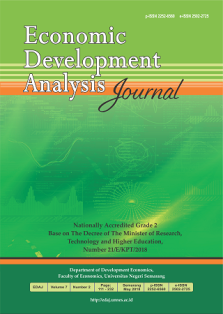Macroeconomic, Institutional, and Energy Consumption on Economic Growth APEC Members
Abstract
Economic growth is a shared goal pursued by every country across various regions worldwide, including the member nations within the APEC organization. However, APEC member countries still encounter several economic challenges to achieve optimal economic growth. First, macroeconomic issues such as regulatory barriers limit both FDI inflows and trade. Furthermore, unemployment remains an unresolved issue. Second, based on the World Bank's average estimates, most APEC countries exhibit low institutional quality. This is due to corruption, weak law enforcement, and lack of government transparency. Third, there is the issue of limited energy supply and increased carbon emissions due to non-renewable energy consumption. This research aims to determine the influence of macroeconomics, institutional quality, and renewable energy consumption on the economic growth of APEC member countries. The analysis method for this research is PVECM regression. The data used is panel data from 2005-2019. The research results show that the variables FDI, Trade, Labor, REC, and IQ have long and short-term influences on the economic growth of APEC countries. Suggestions that can be given are to improve the quality of APEC country institutions because, as seen from the average indicator estimates by the World Bank, Most APEC countries have low institutional quality. This improvement is needed to make policies more effective and efficient. Each country is also expected to increase the amount of renewable energy consumption.


